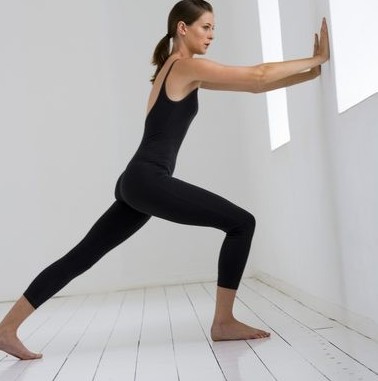PERTINENT DEFINITIONS
Isometric exercises are strength – training movements that do not involve joint movement. A good example would be the plank, since you are holding a position against resistance for a minute or two. Holding a push – up at a mid point position or pushing against a wall would be forms of isometrics. Isometric exercises are used in rehabilitation centers to rebuild strength.
Muscles don’t change length during an isometric workout, even when tension is placed upon them. The weight of the object being pushed or pulled is not overcome by the tensed muscles. Holds are static and joints are stationary.
Isometric exercise benefits are:
- Little or no equipment is necessary
- Little time is needed
- When weights are used, muscle size can increase
- Strength is built
- Joints are strengthened
- Joint flexibility is improved

Isotonic exercises are movements in which muscles maintain equal tension during two types of contractions: (1) concentric – in which the muscle shortens as weight is overcome and (2) eccentric – in which a muscle lengthens in opposition to the force of the weight.
In a biceps curl, the biceps contract in a concentric manner when the weight is lifted to your shoulder. As the weight is lowered, the contraction is eccentric as the working muscle resists the weight load. The eccentric contraction is also called the negative.
Here are benefits of isotonic exercise:
- Increased muscle size, strength and endurance
- Adding muscle mass by increasing resistance as needed
- Improving range of motion
- Boosting cardiovascular health
- Reducing fat
- Helping to maintain metabolism as we age

BULLWORKER
Please review my prior article on Bullworker
Bullworker products are ideal for isometric training, though I use them primarily for the isotonic repetitions, followed by an isometric hold at the end. Bullworker ideally combines both types of exercise.
This is from the Bullworker manual: “The most significant breakthrough in fitness came when Dr. E.A. Muller and Dr. Th. Hettinger discovered maximum muscle growth can be attained by exerting 60% of existing muscle strength against a superior resistance for only 7 seconds once a day, a remarkable fitness technique known as isometrics. The study at the Max Planck Institute consisted of over 200 experiments over a ten – year period. Optimum results are attained with 5 workouts per week, but impressively, even one single weekly workout is sufficient to maintain your improvements attained”.
“Professor James A. Bailey put isometrics to the test with a class of college students at the University of Connecticut. The study resulted in the isometric training group improving three times faster than the sports training group on tests measuring increases in strength, endurance, coordination and agility”.
Please see specific information on a Bullworker package from Amazon here.
As an Amazon associate, I may earn from qualify9ing purchases.
Note the other options available other than the package. I bought the Steel Bow first and then the Bow Classic later.
PROS AND CONS
Dr. Edward R. Laskowski has mixed views of the effectiveness of isometric exercise. He feels that isometrics come in second place to isotonics in building strength, but are very helpful in maintaining strength.
He sees value in isometrics in these situations:
- For building stabilization in the area worked
- For rehabilitation of an injury, such as a rotator cuff issue
- For joint improvement, especially when arthritis is present
- To help lower blood pressure
New York certified personal trainer Caroline Freeman says, “Besides building muscle and strength, isometric exercises are great in that they allow you to train a specific joint angle without requiring you to work through the full range of motion”. She supports the view of Dr. Laskowski in that “there are multiple reasons why someone may not have access to a full range of motion, such as injury rehabilitation or osteoarthritis”…. and that “exercisers need to find ways to strengthen the muscles without aggravating joints”.
Ms. Freeman further adds that “Injuries aside, isometric exercises are handy in that they can be performed in either your weakest or strongest range of motion, such as the bottom or top of a push – up. Perform push – up holds at the bottom of a push – up and you’ll shore up your weakest link, allowing you to move through full push – ups with greater ease. Hold push – ups at the top of the move, usually the easiest part, and you’ll challenge your muscles in a position where they typically don’t have to work as hard”.
Here is an isometric total body workout
MY REFLECTIONS
I was only vaguely aware of isometric workouts until I discovered the effectiveness of doing planks. The tension on my abdominal area let me quickly know that this was a big improvement over sit ups or crunches. Then I discovered that there are several ways to make planks even better. My current version is to tap my knees on the surface as I hold the plank. This contributes to an abdominal “ache” (which is a good thing).
Later, I became involved with Bullworker products, which I love. Some people only use Bullworkers for the isometric hold. I prefer doing as many reps as I find challenging and then holding for 10-15 seconds. This is an ideal way to combine isometrics and isotonics, at least for me. I did not find any “expert” to suggest that isometrics were not valuable, nor did I find any Bullworker user to say that isotonic workouts were less effective. The consensus, which includes my own opinion, is that isometric exercises represent a useful adjunct to more traditional workout methods.
Bullworkers have impressed me for other reasons:
- They are portable
- They protect the joints
- You essentially have a personal “gym” in a small package
- They provide a quicker workout
- They are great for seniors
Here is the Bullworker information on Amazon
So, to answer my topical question, “How effective is isometric exercise?”.
Very effective for the multiple reasons shown above – for strength gains, for rehabilitation, for joint protection and to combine with traditional isotonic movements to add variety to a workout. But not to totally replace isotonic exercise, unless there are medical reasons to do so.
Please leave any comments or questions in the “Comments” box below or e-mail me – richard@myworkoutathome.com. Be well!